Welcome to the blog where you will find musings from around the vineyard and winery. News from the founder Andrew Hodson, a glimpse from the cellar and more.
ANDREW'S NEWSLETTER
VINIFICATION
EVENTS AT VERITAS
Browse by Category
Experience Veritas
Weddings at Veritas
Shop Wines
Sparkling Wine Saga – Part 1 Witnessing Sparkling – Scintilla Special
August 25, 2020
With Andrew Hodson, Veritas Vineyard and Winery
I want to continue my saga in praise of traditional method sparkling wine to encourage you all to enjoy with me the delights of our latest release of 2015 Scintilla.
The very essence of Scintilla as a sparkling wine and what distinguishes it from all the competition is the degree of complexity. Before I can discuss complexity I found myself getting tied up with wine terms that I felt were too “geeky.” My ultimate goal is to be able to explain in terms that anyone who reads it can understand, starting at the beginning and going forward.
The process of appreciating a sparkling wine is two fold, the first is to gather the evidence about the wine and the second is to put the evidence together and come up with a conclusion.
This week I am going to start with my take on how to best ”witness” a wine.
I am going to address how to organize your thoughts when it comes to the first step and to me the most important step that guides me through appreciating a wine and that is how it smells.
One thing is certain your perception is unique to you as an individual.
Introduction to wine perception,
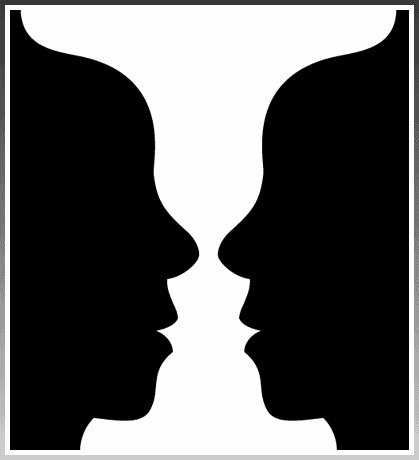
Wine perception, do you see a chalice or two faces looking at each other?
There have been umpteen studies to show how your perception of wine can be influenced by a whole host of factors ranging from your gender, your ethnic background, your education,your mood at the time, even down to how much you think the wine costs!
When it comes to it, what each one of us experiences, our biases and the circumstances in which we drink wine are probably as important as the actual smell and taste of the wine.
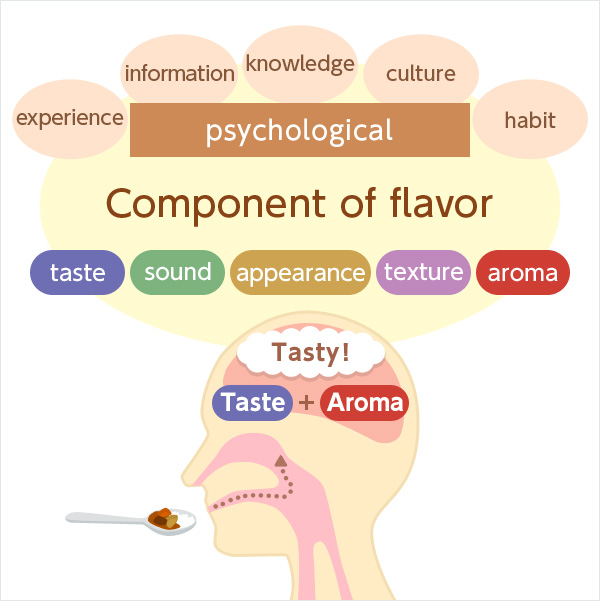
Perception of Flavor, of course the primary modalities smell and taste go hand in hand and are described as the two “chemical” senses but when we taste wine we use not only smell and taste, but also touch -how the wine feels in the mouth, we use our vision to anticipate what we are going to taste and even the pop of the cork or the “glug” as the wine is poured heightens our senses and plays into our final perception of the wine.
Sparkling Expectations affect perception,
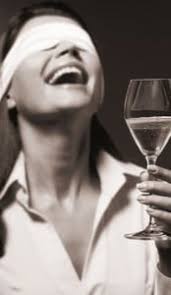
Witnessing Wine
Lack of wine vocabulary
Humans are Visual Creatures
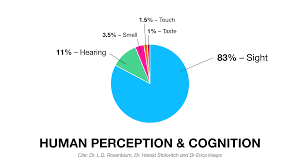
Humans are Visual Creatures. Describing the multiple facets of any wine is difficult. For a start there is no such thing as a wine vocabulary. There are no words that describe a smell, indeed there are some indigent South American tribes that have words for smells but not Western Civilization. We can describe colors with words like red, green, and blue but if you think about it we don’t have words to describe aromas, and we don’t have words to describe tastes.
We are limited to using similes – “it smells like or it tastes like.”
So we use smell and taste as the primary modalities in our witnessing of wine but of course we all use every one of sensory touch, vision and even hearing when we taste a wine.
Sensory Modalities – Smell and Taste
Smell and taste go together, we all know that if you hold your nose and someone puts coffee powder on your tongue you cannot recognize the aroma or flavor of the coffee- it takes the two senses working together to create what we call flavor.
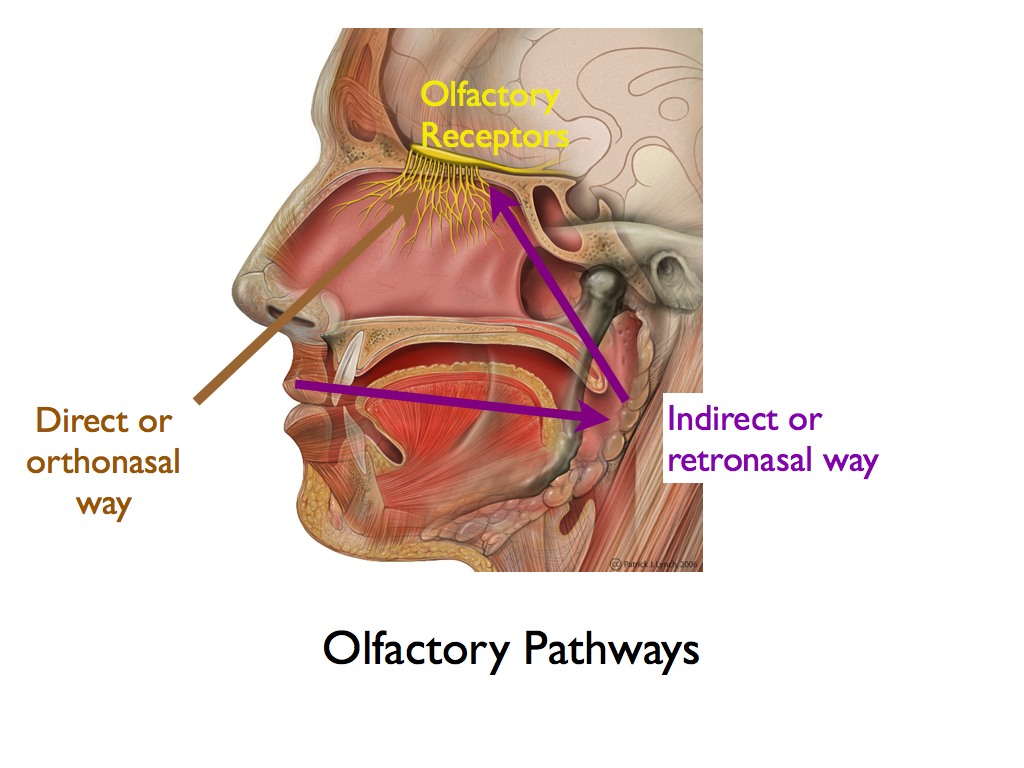
Now of the two senses smell is the most discriminating certainly when compared to taste. There are estimates that most of us can smell and distinguish around 10,000 different smells using 400 olfactory receptors located in an area about the size of a postage stamp at the very top of our nasal passages and that little area, called the olfactory epithelium is the organ that converts chemical substances – odorants into nerve impulses that go to special areas in the brain – the olfactory cortex to create a representation, you could almost say an image of what that odorant means to us. Just as the retina in the eye is the receptor of light that creates nerve impulses that go to the optic cortex to create an image of what we see.
There are so many different smells associated with wine that in 2002 Ann Noble created what she called an aroma wheel. A visual way of organizing smells – don’t forget homo sapiens is much more of a visual animal as I emphasized before. There are those amongst who claim that smell has become less important in our evolutionary history but that has not been borne out by science. The aroma chart has to be a simplification but it forms a basis around which we can think about distinguishing and describing what it we are smelling.
It’s always good to make things simpler
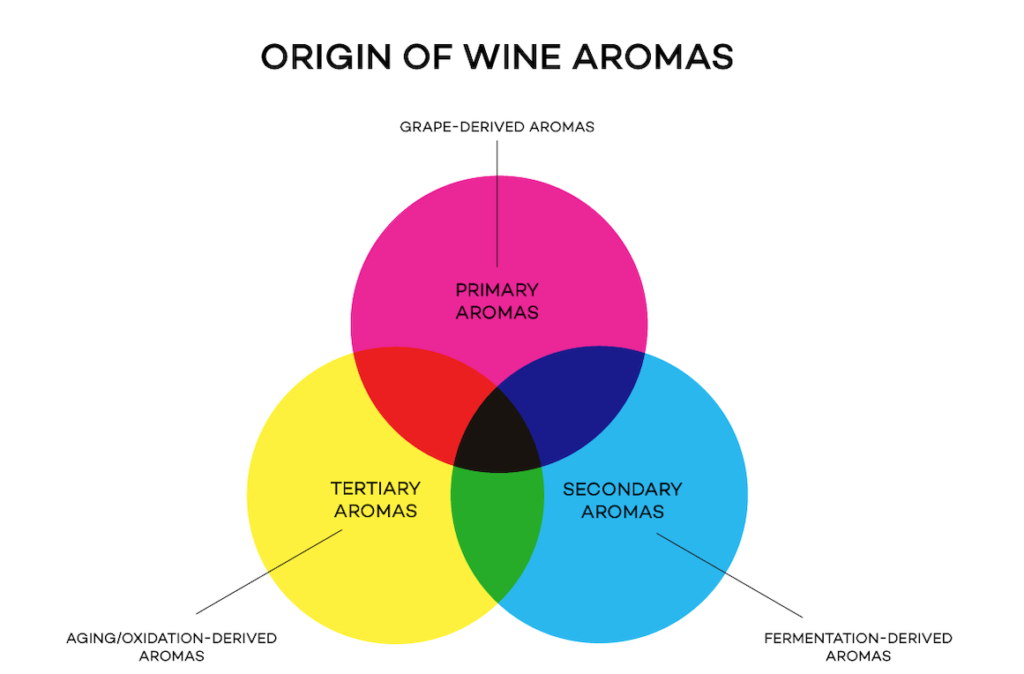
Wine smells
Flowers
Spices
Fruits PRIMARY
Herbs
Nuts
Caramel SECONDARY
Wood
Earth
Chemical TERTIARY
Microbiological
A convenient way to organize those aromas is to think of the life cycle of the vine and the wine made therefrom., The first step is the creation of the grape -what are called the primary aromas. You can think as a way of remembering that the flower comes before the grape. So think of floral aromas always precede fruit aromas.
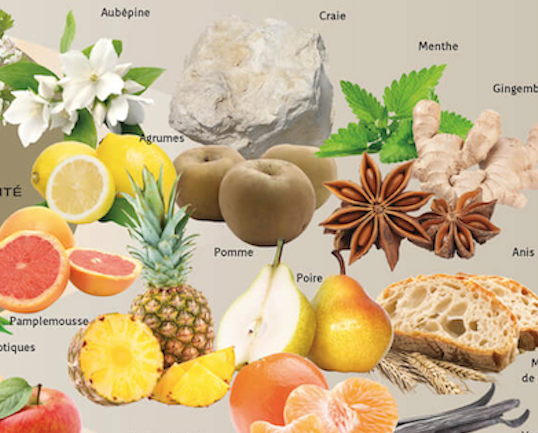
Understand that this is just a way of thinking so that as you process a wine you don’t forget anything. Having thought, flowers, then fruits of which there is a vast array from apricots to z berries. I would say that fruits are the very biggest category of all the flavors used in describing wine. Then as you are thinking through, after fruits there are what we call green or vegetal elements to describe and then as the plant grows through the soil think of earth elements.
Primary aromas are segregated because they also help in thinking of the time course of the wine, these are the elements that for the most part come first in the complex evolution of a wine.
For example there are wines that only have primary flavors the prime example would be a Pinot Grigio smelling and tasting of flowers, citrus fruits, perhaps some slight green flavors and in some cases a hint of minerality. That’s it plain and simple, that’s why so many people love Pinot Grigio for its simplicity.
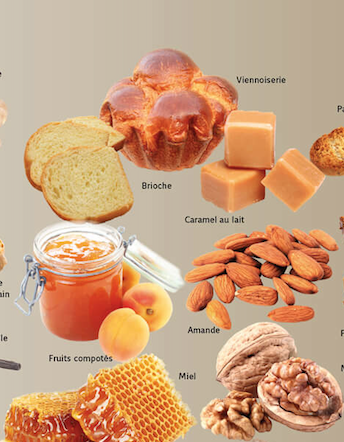
The next stage in the development of a wine the second phase relates to those odorants that are created in the actual process of vinification, the change from grape juice to wine beautifully executed by the ultimate winemaker, the yeast. Fermentation, the conversion of sugar to alcohol and all that happens in between is a fascinating feat of nature that produces a host of flavors and aromas in its own right. The easiest example here is the difference between a steel fermented Chardonnay in which there are virtually no secondary characteristics compared to a barrel fermented Chardonnay that has a host of secondary flavors. The wood, the oak itself provides all sorts of flavors that I could write and probably will, a whole blog on. It depends on where the wood comes from and how it is toasted as to what flavors are imparted to the wine but I will save that for a future article.
The conversion of malic acid to lactic acid creates a range of flavors ranging from cream to butter and in some cases even yoghurt. Malic acid is that very tart acid you taste in a Granny Smith apple is also the most prominent grape acid. Lactic acid is not so tart as malic acid so the conversion”softens” the acidity in the wine.
The conversion is performed by malo-lactic bacteria, naturally occurring organisms that colonize oak barrels.
In a traditional method sparkling wine the yeasts themselves create a panoply of flavors from fresh baked bread, to brioche, butterscotch and caramel.
The third or tertiary phase in the creation of wine flavors comes from the complex chemical reactions that create flavors unique to aging. Like the secondary flavors these flavors are not derived from the grapes themselves.
Tertiary Flavors
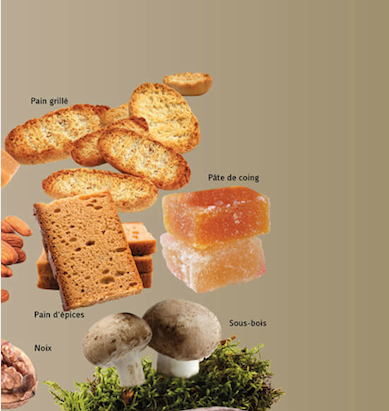
Tertiary flavors, those earthy flavors like forest floor, tobacco, coffee, chocolate, dried fruits, spices, clove, cinnamon.
Wines that are deliberately oxidized with too much oxygen have alluring flavors of toffee,caramel as one might taste in a Madeira. Occasionally microbiological influences from spoilage yeasts like Bretanomyces give wines flavors like leather, barnyard and even band aids that some people relish and yet others reject as faults.
In a traditional method sparkling wine we might witness how the wine evolves as it ages going from primary to secondary to tertiary flavors as it does our Scintilla 2015.
This week I have concentrated on the olfactory side of flavor, remember flavor is a combination sense of smell and taste that produces the delights of our sparkling wines.
Tune in to Facebook Live on Thursday 8/27 with Emily and Elliott discussing how you can share the loveliness of our Scintilla 2015
Next week I will be covering tasty snippets in tasting wine with the continuing theme of wine appreciation.
I would love to hear from you – questions please.
Sparkle on,
Andrew Hodson.
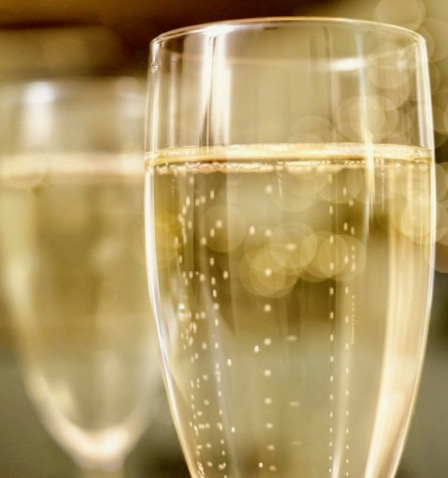
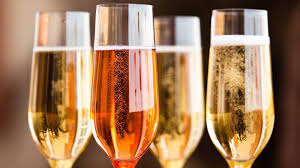
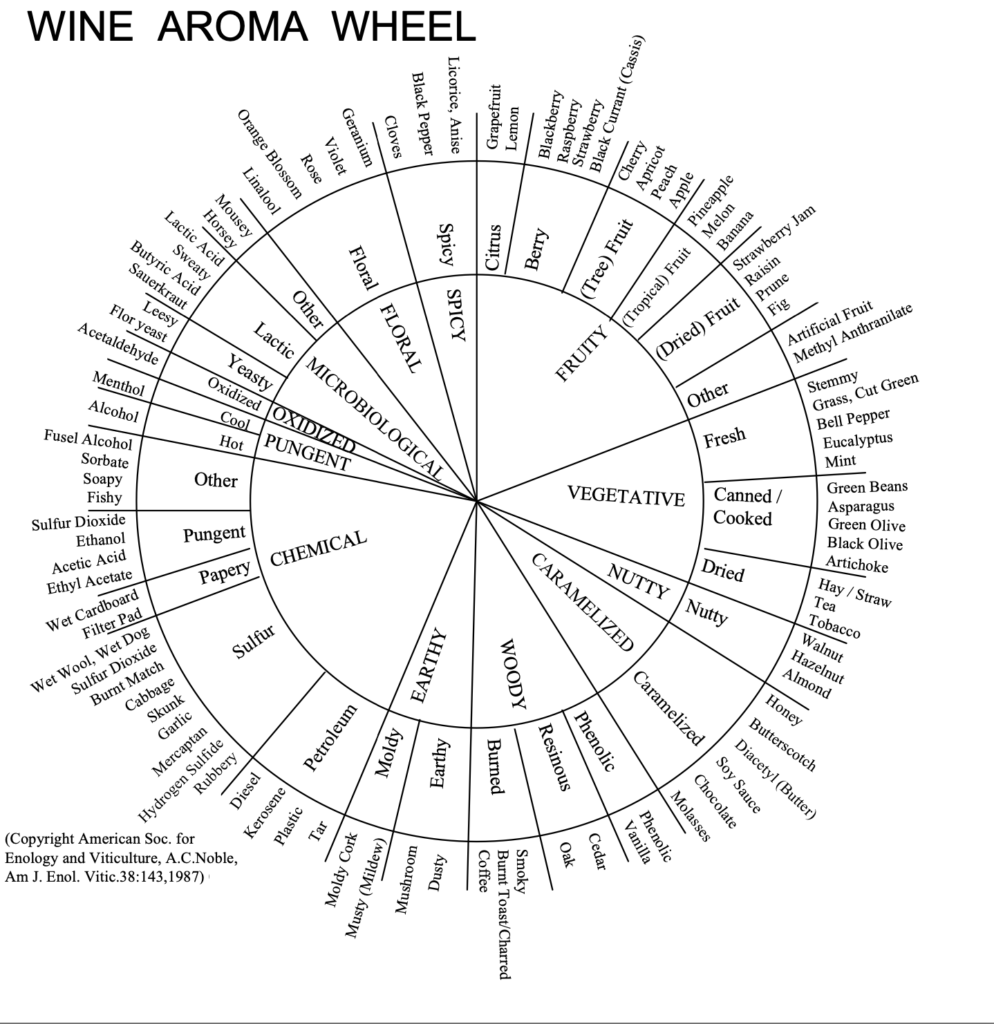
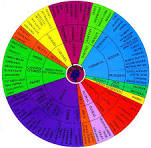

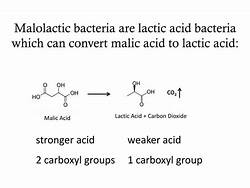
Hi Andrew. Very interesting and very readable article. As someone who rarely drinks sparkling wine I look forward to further thoughts. In the meantime, your remarks that malo-lactic bacteria colonize oak barrels appear to indicate they are unique to oak or have I misunderstood? Also, how much influence does soil have on taste?
Regards Steve
Hi Steve,
The Malo-lactic bacteria are not unique to oak – the bacteria exist in the wild and can be brought into the winery from the vineyard.
The second question is one in which most wine people disagree – I tend to think that the whole concept of “terroir” is over blown – especially with sparkling wine because as a general rule the vines are over cropped and the fruit is under ripe both factors would likely eliminate much influence from the soil. No one has ever been able to show that the chemical make up of wine has any relation to the chemical make up of the soil.
Thanks for comments – keep tuned